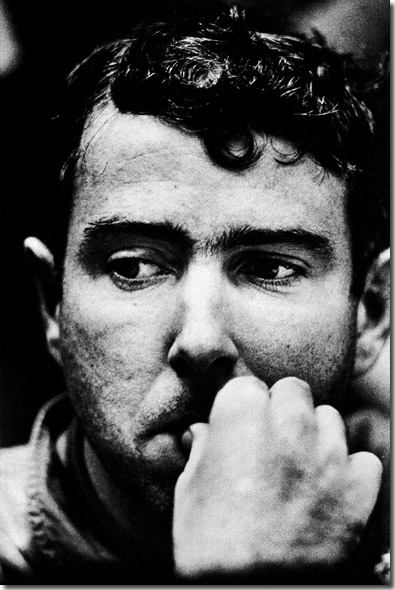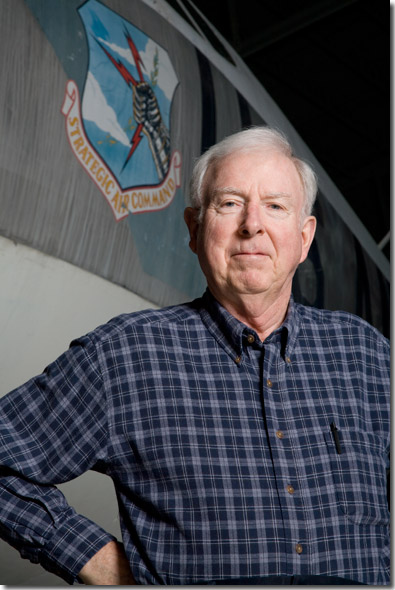 Tired and thoughtful, B-52 pilot Maj. Martin Desilets, 32, unwinds in Guam after a 18-hour bombing mission over Vietnam. Photo by James Hansen.
|
 |

Now retired in Omaha, Martin Desilets visits a restored B-52 at the Strategic Air and Space Museum outside of Ashland, NE, March 2008.
|
|
In 1967, Maj. Martin Desilets was part of a three-bomber "cell" with five to six cells in a "wave." Each plane carried 108 bombs and each bomb was either 500 or 750 pounds. "This was a massive amount of explosives," Desilets says.
"When we were bombing up in the Ho Chi Minh trail, it got to where we were just plowing up the field. We were putting one bomb in another bomb's crater. It got to be ridiculous up there."
In 1967, it took a long time after a target was identified until the bombs could be dropped as the intelligence worked its way up the chain of command. Sometimes the North Vietnamese Army would move on. "One time there were three B-52s that destroyed a grinding wheel and a foxhole. Can you imagine that? Three B-52s, 324 bombs, and you destroy a grinding wheel and a foxhole!? I'll never forget that one."
|
 |
Martin Desilets was one of the 2.5 million servicemen and women who were part of the Vietnam War effort. There were 58,000 Americans who died there. Over 8 million Vietnamese and Cambodians were killed, some quite possibly by Major Desilets' bombs. But that is not something he loses sleep over.
"I'm sure that there were civilians that were killed, but – no, we didn't really think about that," he says now. "We were just sent out. If your bombs hit in the target area, you did your job."
After serving in Vietnam, Desilets was stationed in Omaha's Strategic Air Command (SAC) headquarters and helped with the targeting effort. He went on to a series of other posts and retired after 30 years. Then, he flew corporate jets for Kiewit Construction, again based out of Omaha. He's fully retired now and lives in Omaha's trendy Old Market area.
|


